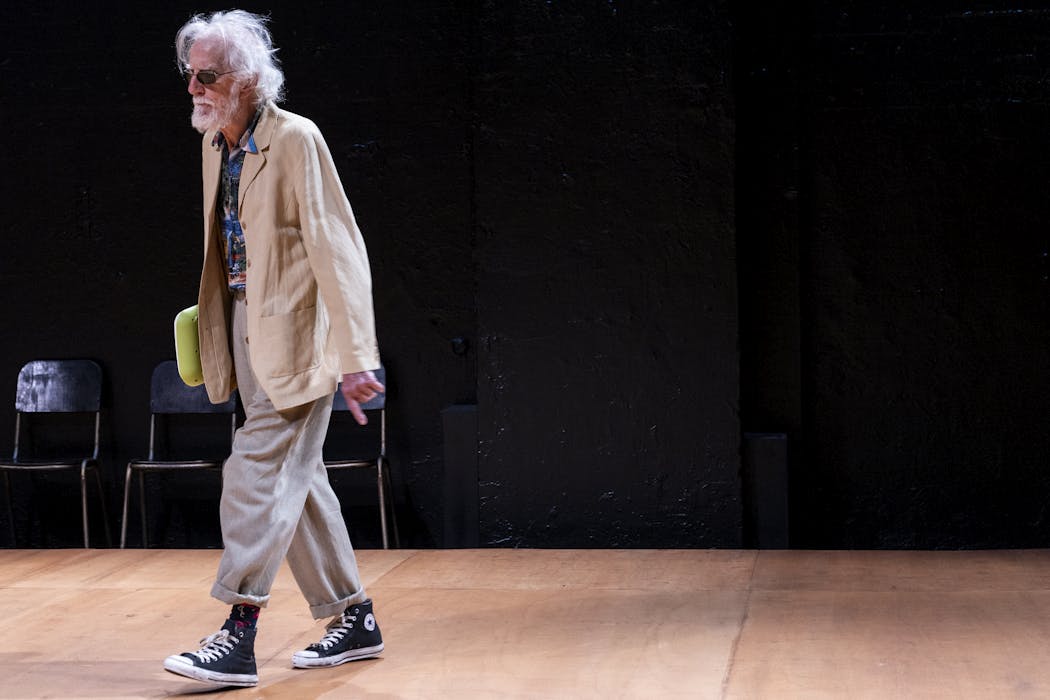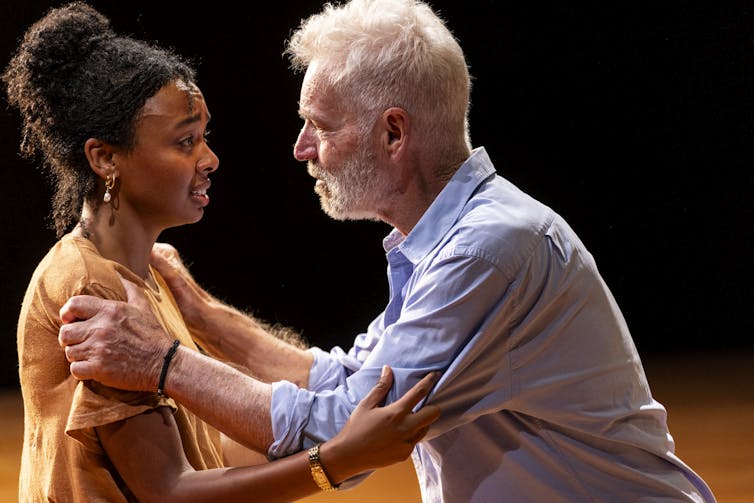Source: Radio New Zealand
As the end of the year approaches, the government’s overhaul of the school system seems to have gone into overdrive and so has opposition to its changes.
In the past month, every major national organisation representing teachers and principals has spoken out against some aspect of reforms the government says will ensure every school is “teaching the basics brilliantly”.
Teacher subject associations have criticised recently published curriculums, nearly every day a different regional principals’ association publishes an open letter to Education Minister Erica Stanford, and the tally of school boards pledging to uphold the Treaty of Waitangi despite a law change removing the obligation has passed 800.
Much of the opposition has come from primary schools, where teachers, principals and education leaders spoken to by RNZ said many felt the pace and scale of change was overwhelming and unreasonable.
Even those who disagreed about the merit of the government’s changes agreed they were extremely significant.
One critic of the government’s direction described the changes as shifting the very foundations of the schooling system, while a strong supporter said they were “tectonic”.
In essence, the government is replacing an open, permissive school curriculum that relies on skilled teachers to do their job well, with one that makes it much clearer what teachers must teach at each year level.
The government says the changes are needed to ensure consistent teaching across the country so fewer children are left behind.
Erica Stanford at a school in August. RNZ / Samuel Rillstone
Educators told RNZ the change needed to happen, but the government was taking it to an extreme, and some said draft curriculums were more like syllabuses that spelled out exactly what to teach and how.
Principals said initial support for a tougher primary school maths curriculum and a more effective approach to teaching children to read had given way to exhaustion and shock.
They said the changes were starting to look shambolic and demonstrated no understanding of what it took to introduce curriculum change.
They were not mollified by the education minister’s assurance that schools would not be expected to implement the curriculum changes perfectly from day one.
They said the teacher-only days and training on offer were not sufficient.
Several said the surprise decision to axe school boards’ legal obligation to give effect to the Treaty of Waitangi could be the last straw that galvanised teachers and principals to reject the government’s changes.
So what’s changed this year and what’s coming?
Primary school Maths and English curriculums introduced
Primary schools started the year with new English and maths curriculums for children in years 0-6.
They cemented two big changes – a national focus on structured literacy for teaching children to read, and a much harder maths curriculum aimed at improving New Zealand children’s poor performance in the subject.
Some teachers said the curriculums were rushed, but Stanford assured them they should make a start and would not be expected to fully implement the new material.
The Education Review Office later reported that most teachers were using the curriculums and about half said student achievement was better than last year.
However, schools were not teaching enough complex maths like algebra and probability.
Lunches a Whangarei school received with the packaging already coming off and burnt. Supplied
New school lunch provider
A new cut-price lunch provider led by Compass Group took over the contract for providing lunches to many schools in the free school lunch scheme.
The change affected 440 secondary and intermediate schools and primary schools with students in Year 7 and above.
It soon provoked a chorus of complaints about late deliveries, excessively-hot meals, and unpalatable food.
By the end of the year criticism had died down but some schools told RNZ they still were not happy with the scheme.
Draft secondary school English curriculum
In April, the much-delayed draft intermediate and secondary school English curriculum was published.
The document covering years 7-13 proposed compulsory Shakespeare for senior secondary school students and spelling and keyboard lessons for children at intermediate schools.
It was revised again in October.
The New Zealand Association for the Teaching of English was highly critical of the way the document was developed, and warned that teachers had not received enough support and resources to begin using it at the start of 2026 for students in years 7-10.
A learning support Budget
The government’s Budget included a $747-million boost for learning support.
Stanford said it was the biggest increase in a generation and school leaders were enthusiastic.
The Ministry of Education said the allocation would take total learning support spending from $1.45-billion to $1.67b by 2028/29.
Half of the money came from cutting Kahui Ako, a scheme that paid teachers and principals to lead work in groups of schools.
It had its fans, but most principals seemed happy to trade the scheme for more teacher aides and specialist support.
NCEA goneburger
In August the government announced the national secondary school qualification would be replaced.
NCEA would be phased out, replaced at Level 1 by a certificate in foundational English and maths in 2028 and at Levels 2 and 3 by the New Zealand Certificate of Education and Advanced Certificate in 2029 and 2030.
Officials said the qualification would remain standards-based – the same as NCEA.
Sample certificates published with the announcement indicated there would be four standards per subject, with half assessed internally and half externally – the same as proposed under earlier reform of the NCEA, but contributing to an overall mark out of 100 and a corresponding A-D letter grade.
Critically, the new qualification would eliminate NCEA’s flexibility by requiring students to study five full subjects and pass four – no more mixing and matching of subjects.
It would also hand responsibility for “vocational” subjects to industry-led bodies in a push to raise the status of trade training and create a stronger pathway for students heading for apprenticeships rather than university degrees.
Though most secondary teachers agreed NCEA needed an overhaul, they were divided over the merit of the government’s plans.
A group of 90 secondary school principals signed a letter opposing the plan and about 64 countered with a letter in support.
Vocational versus academic
In September the Ministry of Education published a list of subjects that would be assessed by the new secondary school qualification in years 11-13.
It classified some subjects as “curriculum subjects” that would be developed by the Ministry of Education and some as “vocational”, meaning they would be developed by industry skills boards.
Some teachers were angry hospitality was dropped entirely as a year 11 subject, others were unhappy that subjects such as tourism and outdoor education were classed as vocational.
Critics said the rapid reversal of agriculture’s classification as a vocational subject indicated the change had been poorly thought-out.
Teachers on strike in Wellington. RNZ / Mark Papalii
Primary maths curriculum recalculated
In October the government changed the years 0-6 maths curriculum – even though it had been gazetted and schools had been using it since the start of the year – following a review by Australian consultants.
Maths education experts said the changes were extensive and made the curriculum even more difficult.
The announcement outraged some teachers and principals who said it was unreasonable to change the curriculum yet again, and increased their already significant workloads.
Curriculum drafts for six learning areas to years 10
In November the government published draft curriculums for Years 0-10 in the remaining six learning areas – science, social sciences, arts, technology, health and physical education, and learning languages.
The content was aimed at ensuring greater consistency and clarity about what schools should teach at each year level but it provoked complaints from some teacher subject associations.
They said it did not reflect their input to the writing process, seemed to have been compiled using AI and extensive borrowing from English and Australian curriculums, and in some cases indicated a complete lack of understanding of the subjects.
The government said teachers could have their say during consultation, but teacher groups told RNZ they had little confidence in the process given what they said had been a secretive development process.
Teaching Council – power grab or necessary intervention?
In November, the government announced it would move the Teaching Council’s responsibility for standard-setting and initial teacher education to the Ministry of Education.
It would also change its governing body so a majority of members were ministerial appointees.
The move was prompted by a Public Service Commission investigation of the council’s handling of conflicts of interest and procurement.
But it angered many education groups, prompting a joint letter to Stanford from 10 national organisations.
They warned the change eliminated the council’s independence and greatly increased the government’s ability to dictate how teachers are trained and what standards they must meet.
The government said the changes made the council similar to other professional bodies such as the Nursing Council.
Treaty clause goneburger
The government had been moving to downgrade a legal requirement for schools to give effect to the Treaty of Waitangi – making it subsidiary to a focus on student achievement.
But in November it made the surprise announcement it would delete the requirement altogether.
It said the Treaty was the Crown’s obligation, not schools’.
The change was decried by all major school bodies, including the Principals Federation, Secondary Principals Association, School Boards’ Association, NZEI and PPTA.
It prompted more than 800 school boards to publicly state their support for the treaty.
Education and Training (System Reform) Bill
This week the government introduced a bill that it said would make system-level changes to support its overarching goal of improving students achievement.
The bill was the vehicle for making the afore-mentioned changes to the Teaching Council.
But it would also give the minister the power to change the curriculum at will, allow a new property agency to force schools to carry out building work, and speed up intervention in failing schools.
Teacher unions the NZEI and PPTA said it amounted to a ministerial power-grab.
What’s coming
English, maths curriculums extend to more students
This year schools had to teach new years 0-6 English and Y0-8 maths curriculums.
Next year they’ll be adding new English content for years 7-10 and new maths content for years 9-10.
Not forgetting the fact the earlier maths curriculum has been significantly changed and schools will have to change what they teach and when.
The government said draft Y11-13 curriculums would be available in term 1 “for wider feedback and to build familiarisation”.
Tougher line on attendance
Schools will have to start 2026 with an attendance management plan.
The government says the plans will show how a school will respond to declining attendance.
It has also signed new contracts with attendance service providers and says new case management software will help them to do their jobs better.
Latest data showed attendance rate improvement stalled in term 3 and families were still taking children out of school for holidays and family events.
School lunches – new providers for years 0-6 at primary schools
The government’s cut-price school lunch model will extend to 188 years 0-6 primary schools next year.
Ten providers have been selected – the Compass Group is not one of them.
The government said the average cost of the lunches would be $3.46.
Schools that make their own lunches are nervous about their ability to continue doing so once their funding falls.
Sign up for Ngā Pitopito Kōrero, a daily newsletter curated by our editors and delivered straight to your inbox every weekday.
– Published by EveningReport.nz and AsiaPacificReport.nz, see: MIL OSI in partnership with Radio New Zealand




![]()











